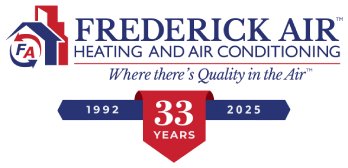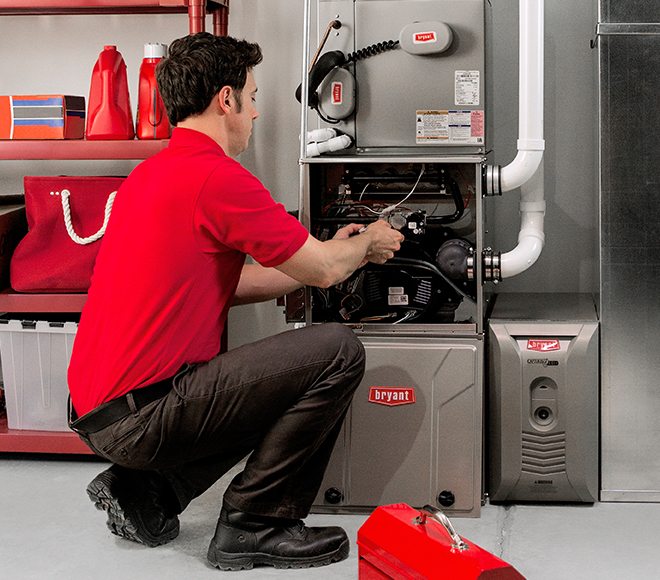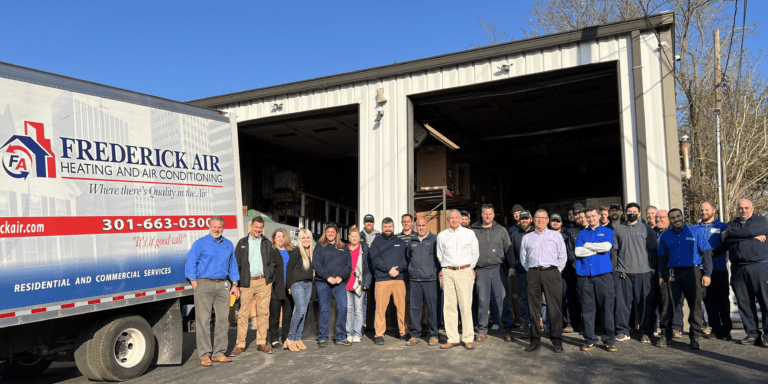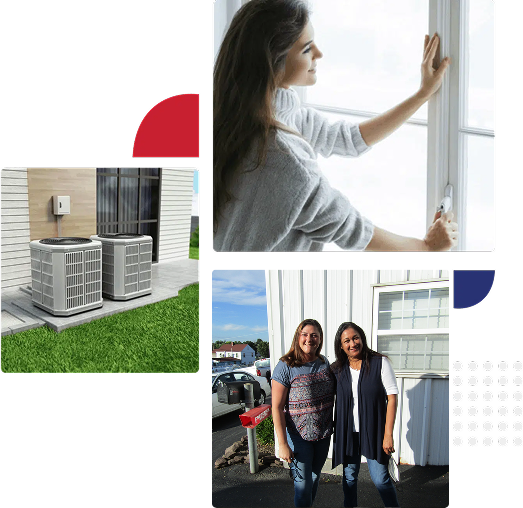
It isn’t an issue that lurks at the front of anyone’s mind, but your HVAC system freezing up on you can seem like a near-apocalyptic situation, especially when it occurs when the weather outside is especially cold. The temperature dips below a comfortable level, you crank up the heat and stay toasty warm for several hours, then you feel a cold chill along your spine.
That cold chill you feel is the change in the air coming from your HVAC ducts. It has suddenly switched from warm and wonderful to cold and calamitous. What just happened?

One usual suspect is that your HVAC system has experienced a freeze-up, which can actually mean one of many different things in terms of heating and air conditioning. In most situations like this, you can perform a quick physical check of the unit itself and see a thick layer of ice coating the outside of the HVAC equipment.
Turning the system to emergency heat and letting the outdoor unit slowly thaw out is one way to deal with this dilemma, but it certainly isn’t the most pleasant.
The “quick fix” of shutting down your outdoor HVAC and hoping it thaws soon, however, does not identify and resolve the underlying issues that may be causing the problem in the first place. It will happen again, and it will most likely reoccur during another cold snap when you have been running the heat most of the day in an attempt to keep the wintery weather outside, rather than inside, your home.
Eventually, your heating and cooling equipment could suffer a catastrophic failure at the worst possible time. Rather than wait for that to happen, read up on some of the issues that can happen to create unpleasant climate change at home, plus a few things you can do to increase the operating efficiency, lifespan, and potential service call expenses for your HVAC system.
A Quick Tutorial on Heating and Cooling Units
Most people have central heat and air systems that maintain the desired temperature in their home regardless of the changing seasons. Controlled by a thermostat which is, in turn, controlled by human input, the HVAC system operates in one of two ways – it heats or cools the interior of your house.
When it’s hot outside, the air is blown through the ductwork, an HVAC system’s fan is blowing air across the evaporator coil where it is cooled and out the wall or ceiling grills. For heat inside your home, it works in reverse – the fan blows air across the warm evaporator coil while the outdoor coils are cold.
A Heat Pump system also has a defrost mode, which it will switch over to automatically as needed. During the defrost mode an “emergency heat” option that most Heat Pumps are equipped with will turn on and air will be forced over the heat strips to push warm air into the ducts and into your house. The defrost cycle lasts long enough for the system’s outdoor coils to warm up and prevent the build-up of ice that coats units and results in the system freezing up.
What Causes an HVAC Unit to Freeze Up?
Your heating and cooling system generally won’t experience icing on the exterior unless it has been operating in heating mode continuously for most of the day, if not longer. Typically, the standard defrost cycle that occurs during constant operation is enough to keep the equipment from becoming coated with an excessive layer of ice. If the system does ice up and stops blowing heat through the registers and ducts inside your house, it is often one of a small number of possible issues:
- Refrigerant coils need to be cleaned
- Refrigerant may need to be recharged/refilled
- Fan is not operating efficiently or correctly
- Poor airflow through the system is preventing the coils from warming up properly
While that list of potential problems is not all-inclusive by any means, those are often the biggest culprits when your HVAC system stops functioning the way you expect it to or the way it’s intended to. Identifying and resolving problems with your heating and cooling equipment is important not only because you want heat or air conditioning on demand, but also because little problems can become major complications that could require replacement of the entire unit.
How to Keep Little Problems From Becoming Major Complications
Not everyone is a licensed HVAC technician, which can dissuade many people from even thinking about trying to troubleshoot heating and cooling issues on their own. If your first reaction to an unpleasant change in the interior climate of your home is to call your local HVAC professional, that’s perfectly fine. We’re here for you.
For those of you who fancy yourself a bit skilled in the mysteries of your home’s inner workings, there are a few things you can do on your own.
Ensure Proper Air Flow
Starting with the simplest and least expensive fixes first – one of the most important things you can do to help your HVAC system operate at peak performance is to make sure the filter, ducts, and drain are clean and clear of debris, dust, and other detritus that inhibits proper airflow. If your heating and cooling equipment is not able to efficiently circulate air, it works much harder than it should to try to maintain your desired interior temperature.
Poor airflow can also contribute to ice build-up on the unit’s coils if it cannot circulate enough air over the evaporator coils during normal operation or when in defrost or emergency heating mode to prevent the ice from forming and expanding. In addition to making sure the filter is clean and free of a layer of dust or the unit’s drain is not blocked or clogged, you should also ensure adequate airflow through the vents and registers by keeping them uncovered and clear of any obstructions like furniture, draperies, rugs, or other items.
Check that the Evaporator Coils Aren’t Blocked
The evaporator coils on your HVAC system aren’t just a neat-looking cover to protect the inner workings of the equipment. Air flows over and through those coils to pass into your home, not only providing you with warm or cold air but also to help defrost the HVAC unit when it operates in heating mode for long periods of time.
Looking at the outdoor unit; Any number of oddities can block the flow of air over the coils, reducing the system’s efficiency, defrosting ability, and overall performance. Because they are located outside, usually next to an outer wall of your house, they tend to collect a variety of natural detritus like grass clippings, leaves, plain old dirt, small woodland creatures, and so on.
Keeping the refrigerant coils unblocked is relatively easy – you just need to take a look at the unit periodically and remove any obvious debris that can inhibit airflow. Performing a routine deep cleaning on the refrigerant coils can go a long way toward helping extend the life of your HVAC unit and keeping it operating properly, too. If you aren’t sure how to perform this type of system maintenance on your heating and cooling equipment, don’t feel comfortable doing so, or are worried you might start voiding warranties if you start touching things, a certified HVAC technician can clean the coils quickly and easily.
Scheduled Maintenance Visits
Digging into the guts of anything electrical or mechanical can seem like a mad dash into the uncharted reaches of space for some people. Beyond the basic stuff like improving and maintaining air flow or keeping the coils cleaned, the more technical aspects of HVAC troubleshooting do require more advanced knowledge and ability. At that point, bringing in a pro is a good idea.
Whether the issue is a faulty fan or recalcitrant heat strip or any other issue creating chaos with your heating and cooling equipment, an HVAC technician will be able to hunt down the offending item and offer information, advice, and options to fix the problem.
Conclusion
Just like everything else with hundreds of small moving parts, an HVAC system requires periodic preventive maintenance to keep it running like a well-oiled machine. Most people don’t put much thought into what keeps their home comfortably cool or warm no matter what the weather may be like outside – at least until the temperature changes are happening inside, too.
Rather than waiting until the last minute and possibly having to spend top dollar, keep your HVAC system properly maintained all year round. Not only does regular maintenance keep your equipment functioning at its best, but it also keeps the costs lower when you do have to invest in minor repairs before they become major problems.
Schedule your maintenance visit online by clicking here.




